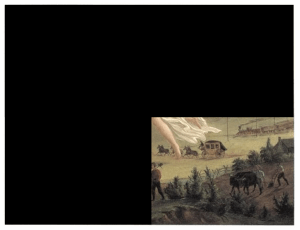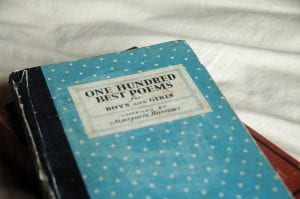Front Loading with Images: Seeing the Big Picture
This blog post was written by Karen Dopico, a current undergraduate student at Saint Vincent College enrolled in my course, Reading, Writing, and Differentiation in the Content Area. Read more about Karen at the end of the blog.

14995841 / Pixabay
Our sight helps us make perceptions about the world around us; whether it’s by reading someone’s body language or looking outside to check the weather, our sight informs us of our surroundings. Students do not need to master one concept in order to look at an image. Those who are able to see can look at an image and engage with it through active looking. Front loading with images involves having students closely analyze an image as an anticipatory set in order to activate prior knowledge
Rather than having a lecture, we can engage our students with a topic through front loading with images. Teachers can introduce a topic to students by having them closely studying images related to that topic. What is beneficial about this strategy is that almost any student can participate, as this strategy can reach struggling readers and students who are not fluent in English. This strategy can touch each student and challenge them to actively look at an image in depth by analyzing its details and trying to get at “the big picture” (no pun intended).
Research has told us that “Instructors have reported that their use of images in the classroom has led to increased student interactivity and discussion. Teaching with images can also help develop students’ visual literacy skills, which contributes to their overall critical thinking skills and lifelong learning” (Hall, 2013). Giving students prior knowledge on a topic through a visual will give them the chance to use their critical thinking skills. Regardless of their literacy, students can use their critical thinking skills when front loading with images and not have to worry about their reading skills.
Preparation
Before implementing this strategy, you will need the following
- One image relating to your topic
- The image cropped into four quadrants
- PowerPoint
- Paper copies of the image
- Note paper
- A cut out of a square shaped like an “L”
The goal of this strategy is for students to engage in active looking at an image related to your topic. For this to be successful, you must first introduce the topics to your students and give them some background knowledge. Next, have your students look at a PowerPoint Presentation of your image. This PowerPoint should have six slides total, the first being the image you chose for class. The next four slides are the four quadrants you cropped of the image. The final slide is the original image. When students see the picture in its entirety after studying parts of it so closely, they will look at it with a new perspective.
Paper and note taking can also be used with this strategy. Students will need copies of your picture, paper to take notes on, and cut outs of squares that are shaped like an “L,” exposing one quadrant of the picture. Here is an example of what the cutout would look like:

Implementing the Strategy
Depending on your classroom, there are many different modifications on how this strategy can be implemented. If you have students who struggle with writing down their ideas, the best strategy would be to have a class discussion with the front loading with images activity. Have students look at the first slide to see the whole image for about thirty seconds. Then, have them look at each quadrant for 1-2 minutes and ask them the following questions: What do you see? What is the significance behind this? How you think this relates to our topic? After looking at each section, show the students the full image on the last slide and allow them to look at it in silence for thirty seconds or less. Once they are done studying the entire image, ask them more questions: What is the main idea behind this painting? What are some small details that support this main idea? What would you name this painting?

Sophieja23 / Pixabay
If you have students who you believe would benefit from working with partners or from note taking, this can be a modification to the strategy. While using the PowerPoint presentations, give students a copy of the image, paper to take notes, and a cutout of the “L.” Students should fold their note paper into four quadrants (hamburger then hotdog). While you change the slides from one quadrant to another, have students cover the same quadrants with their cutouts to study that part of the picture. In groups of two or three, have students actively look at the quadrant together and take notes on their paper in the quadrant that corresponds to the one they are studying. Students should look at each quadrant for at least two minutes. Once they are done taking notes on the quadrant, ask a student from each group to share what they noted. Do this procedure with each of the slides until the whole image is displayed and complete the lesson like you would in the previous paragraph with asking questions about “the big picture.”
Going Forward
Front loading with images is an excellent strategy, as it makes students search for the visual meaning behind an image. For more on this strategy, click the link below and see point two on “Front Loading with Images.”
About Karen:
Karen Dopico is a junior at Saint Vincent College pursuing a B.A. in History with a minor in Secondary Education and a minor in Theology. Her goal is to create an inclusive environment in her future classroom along with giving students the opportunities to hone the skills of a historian. She believes that studying the human story allows us to understand one another in our present state and hopes to bring this message to her future classroom.
Citations
Dean, M. (2020, November 19). 10 effective teaching strategies for every classroom – Classcraft Blog. Classcraft. https://www.classcraft.com/blog/effective-teaching-strategies-for-every-classroom/.
Hall, M. (2013, April 19). Teaching with Images | The Innovative Instructor. The Innovative Instructor Blog. https://ii.library.jhu.edu/2013/04/19/teaching-with-images/#:%7E:text=Instructors%20have%20reported%20that%20their,thinking%20skills%20and%20lifelong%20learning.
Lavery, C. Getting Teenagers to Talk. Teaching English. https://www.teachingenglish.org.uk/article/getting-teenagers-talk




